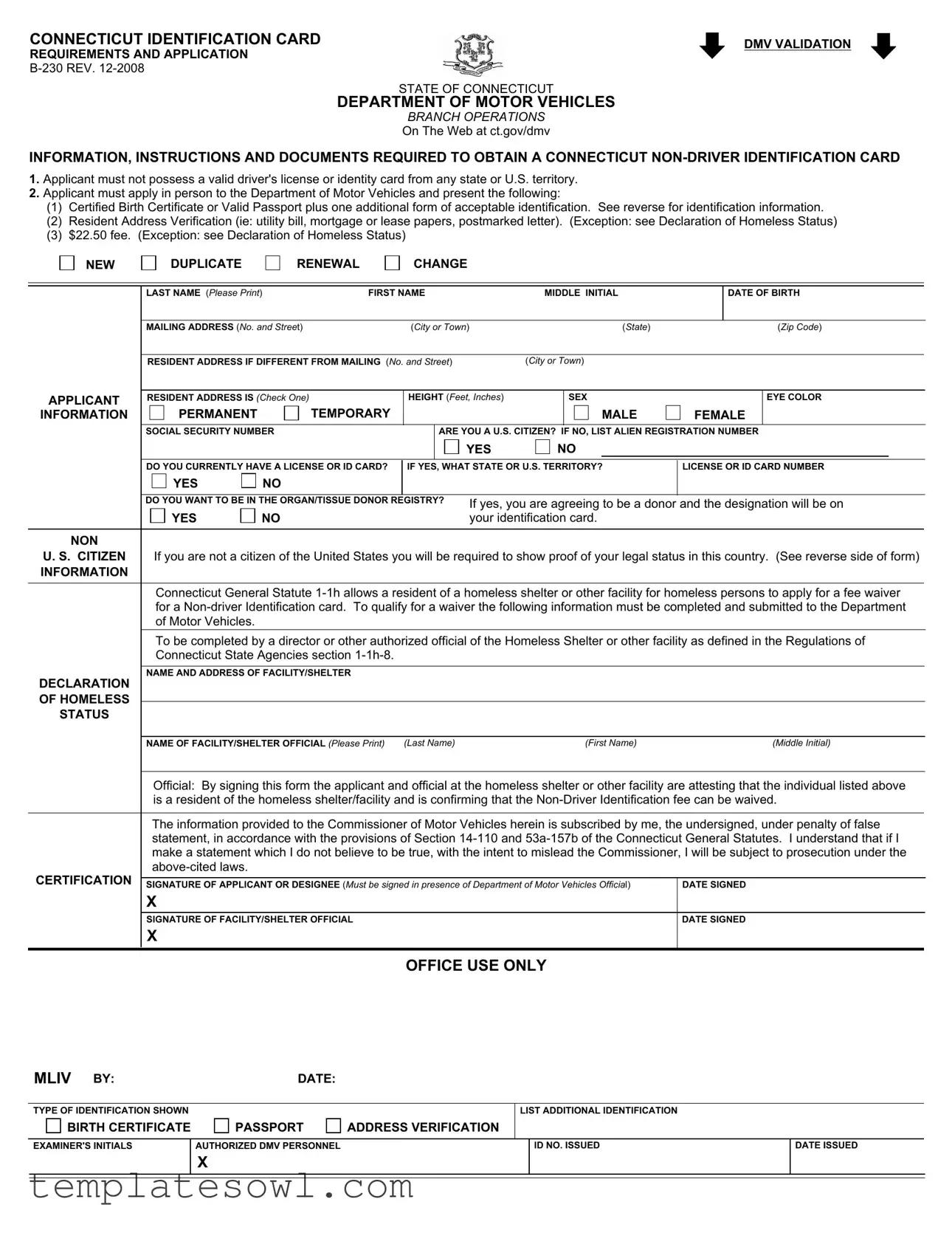What is the B 230 form and who needs it?
The B 230 form is the application for a Connecticut Non-Driver Identification Card. This form is essential for individuals who do not have a valid driver’s license or identity card from any state or U.S. territory but need a form of identification. This includes residents seeking a state-issued identification card for various personal and professional purposes.
What documents are required to apply for a Connecticut Non-Driver Identification Card?
To successfully apply for this card, applicants must present specific documents. These include a certified birth certificate or a valid passport, along with one additional form of acceptable identification. Furthermore, proof of residency is required, such as a utility bill or mortgage statement. Applicants also need to pay a fee of $22.50, although fee waivers may be available for homeless individuals through a specific process.
Can homeless individuals apply for the B 230 form without paying the fee?
Yes, individuals residing in a homeless shelter or similar facility may apply for a fee waiver when obtaining a Connecticut Non-Driver Identification Card. To qualify for this waiver, the application must include a declaration of homeless status, which requires a director or authorized official from the facility to attest to the applicant's residency and confirm the fee waiver.
Do I need to apply for the B 230 form in person?
Yes, applicants must apply in person at their local Department of Motor Vehicles (DMV) office. It is important to bring all required documentation to ensure a smooth application process.
Are foreign documents accepted as identification when applying for the B 230 form?
Foreign documents other than a valid passport are not accepted as forms of identification for the Connecticut Non-Driver Identification Card application. If presenting a foreign passport, it must include the appropriate U.S. Citizenship and Immigration Services (USCIS) documentation to verify legal status in the U.S.
How can non-U.S. citizens apply for the B 230 form?
Non-U.S. citizens must provide specific documents based on their visa status. For instance, holders of a B1 or B2 Visitor Visa need an Employment Authorization Card and a pending application for lawful permanent residence. Similarly, students on an F1 Visa must show USCIS document I-20, while H1B and J1 Visa holders must present relevant documentation from their employers or educational institutions. All applicants will undergo verification through USCIS before receiving their identification card.

